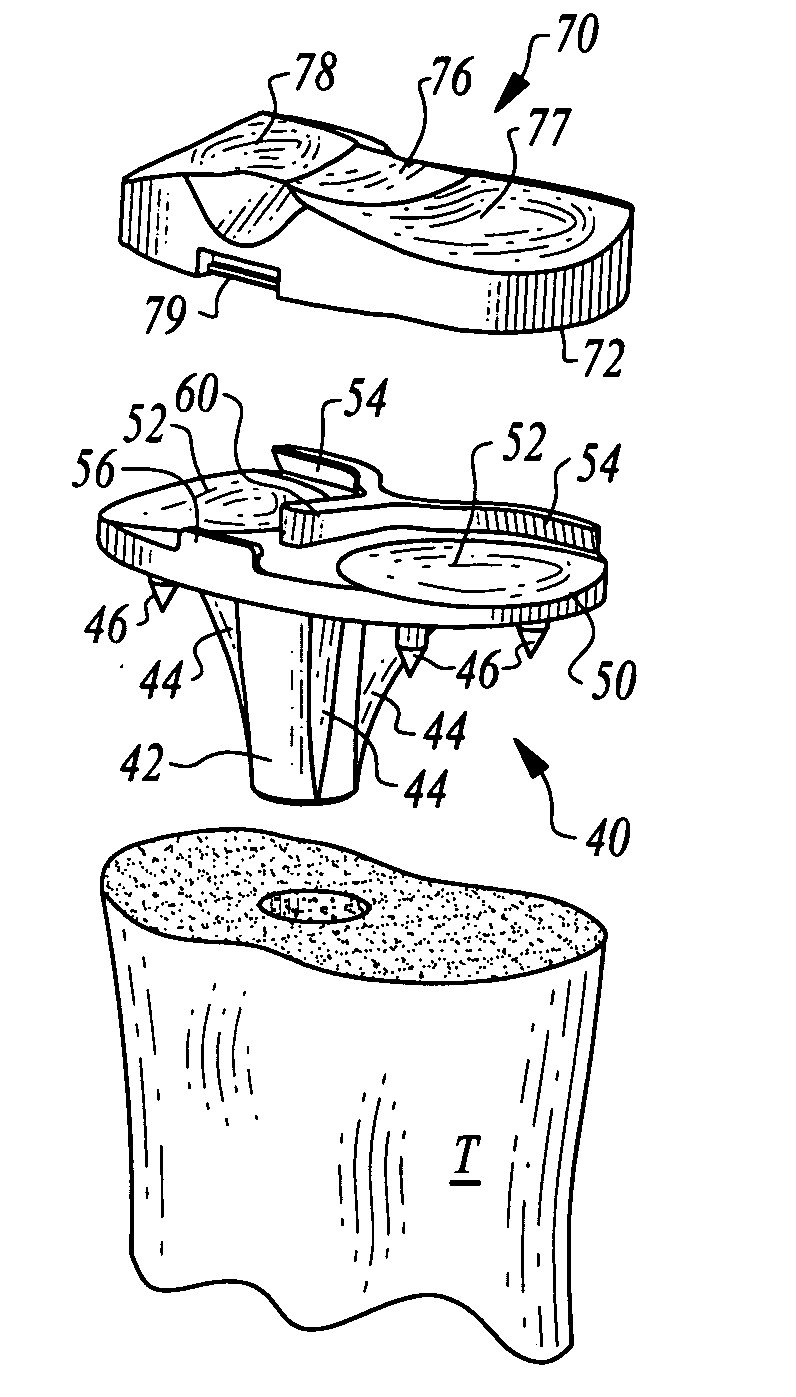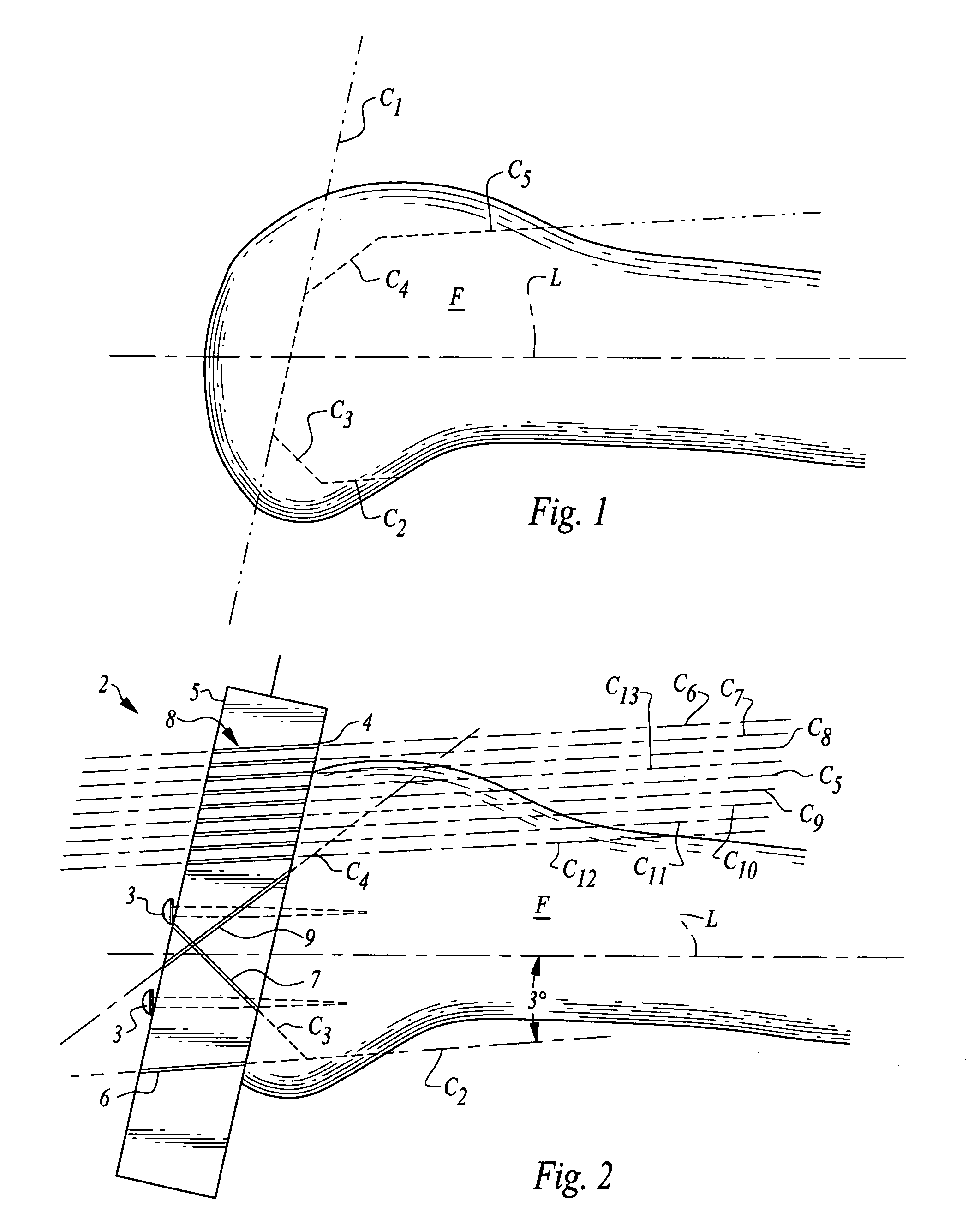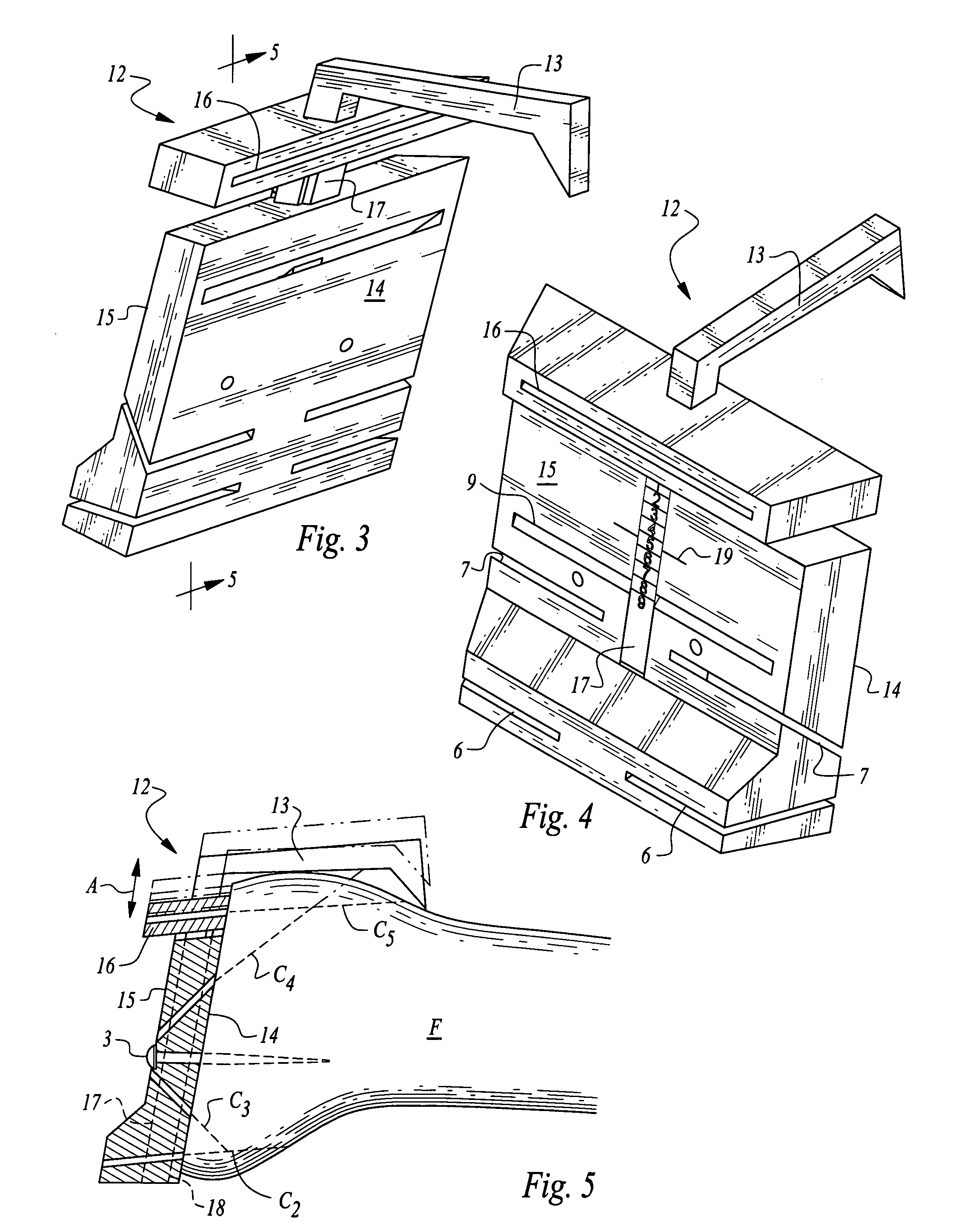Femoral component of an artificial knee joint
- Summary
- Abstract
- Description
- Claims
- Application Information
AI Technical Summary
Benefits of technology
Problems solved by technology
Method used
Image
Examples
Embodiment Construction
[0061]Referring to the drawings, wherein like reference numerals represent like parts throughout the various drawing figures, reference numeral 10 is directed to an artificial knee joint for replacing a natural knee joint between a femur F and a tibia T. The invention includes a femoral component 20 and a tibial component 40, as well as tools 2, 12 for forming a distal end of the femur F to receive the femoral component 20. The invention also includes methods for preparing the distal end of the femur to receive an appropriately sized femoral component.
[0062]In essence, and with particular reference to FIGS. 15 and 16, the basic details of the artificial knee joint 10 are described, according to a preferred embodiment. The joint 10 includes the femoral component 20 adapted to be coupled to an appropriately shaped distal end of the femur F. The joint 10 also includes a tibial component 40. The tibial component 40 primarily includes a shaft 42 for insertion into the proximal end of the...
PUM
 Login to View More
Login to View More Abstract
Description
Claims
Application Information
 Login to View More
Login to View More - R&D
- Intellectual Property
- Life Sciences
- Materials
- Tech Scout
- Unparalleled Data Quality
- Higher Quality Content
- 60% Fewer Hallucinations
Browse by: Latest US Patents, China's latest patents, Technical Efficacy Thesaurus, Application Domain, Technology Topic, Popular Technical Reports.
© 2025 PatSnap. All rights reserved.Legal|Privacy policy|Modern Slavery Act Transparency Statement|Sitemap|About US| Contact US: help@patsnap.com



